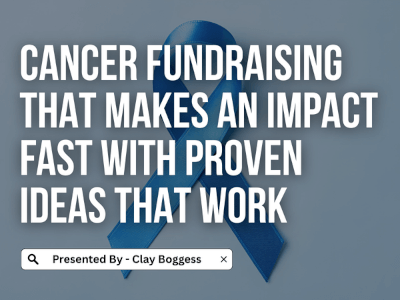
Learn whether a catalog or candy bar sale works better for your school.
If your school's been doing catalog fundraisers each year, how do you know this type of sale is best for your school? Choosing the correct type of fundraiser is more important than picking the next best catalog that promises to make you a lot of money. Taking a step back and ensuring you're first doing the correct type of fundraising program can be daunting, considering there are so many fundraisers. There are many things to consider, like affordability, order processing, and delivery.
Do you want your students to take orders from a brochure with pictures of items for sale inside, or should you order the product and then ask them to sell it as they collect the money? To answer this question, it would be a good idea to consider the pros and cons of each fundraising type to determine which one might be the best option.
If you're undecided about whether you should take orders and collect money using a brochure fundraiser, or an 'in-hand' candy bar sale, perhaps the following information might benefit you.
1. How a Fundraising Catalog Works
With the catalog fundraiser, each of your students receives a brochure and order form. After showing the brochure to potential supporters, one or more items are selected and recorded on the order form.
Money is usually collected by the group when the order is placed. At the end of the sale, the order forms and money are returned to the sponsor, who then forwards them to the school fundraising company.
Once the order has been processed, it's delivered to the school. The students who participated in the sale then picked up the boxes with their names on them and delivered the items to the people they sold to.
So what are the pros and cons of the catalog fundraiser?
PROS:
- Receive the exact number of items that have already been paid for. No under or over-ordering issues to have to deal with.
- Items are prepacked by the seller—no item sorting at delivery.
- Prizes are offered to every student who participates. With a candy bar fundraiser, often only the top sellers get prizes.
CONS:
- Requires an additional step of delivering items to customers. Selling candy bars only requires meeting with the customer once, where money is exchanged for the product.
- It may require dealing with occasional broken or missing items. Parents usually have a certain period to report any brochure item discrepancies.
- The occasional student might collect money in exchange for orders but never turn the money in. Even sponsors have been known to take funds.
2. How Candy Bar Selling Works
The school sponsors must order candy bars based on how many potential sellers they think they will have. This is done on consignment through the submission of a purchase order. Once their order arrives, candy bar carrier boxes are distributed to group members who sell them directly to neighbors, family, and friends.
Money is collected at the point of contact, then turned in to the sponsor at the fundraiser's end. The average selling price is $1.00 to $2.00. Candy bars are trendy products that can be immediately enjoyed.
Now, what are the pros and cons of a candy bar fundraiser?
PROS:
- Only one contact with the purchaser is necessary to complete the sale. Catalog fundraising requires two different steps. Take the order, then deliver the product.
- They're affordable to most people. This is seen as an advantage, particularly to high school groups, because sales can also be made to their peers who usually don't carry much money.
- They're often seen as an impulsive buy. You see it, you want it, and it's cheap.
CONS:
- If you order too much, you may be stuck with additional products. This can be an advantage because you can always ask your students to sell the leftovers.
- Prizes are usually only offered to the top sellers. This can discourage participation.
- The sponsor must collect money after the product is distributed to the sellers. Some sellers may keep the product and not return any money. Or they may lose the product. Issues have been reported involving leaving it in the back seat of a car.
See our candy bar fundraiser products.
So which fundraising program will you choose for your school?
Author Bio
Clay Boggess has been designing fundraising programs for schools and various nonprofit organizations throughout the US since 1999. He’s helped administrators, teachers, and outside support entities such as PTAs and PTOs raise millions of dollars. Clay is an owner and partner at Big Fundraising Ideas.



